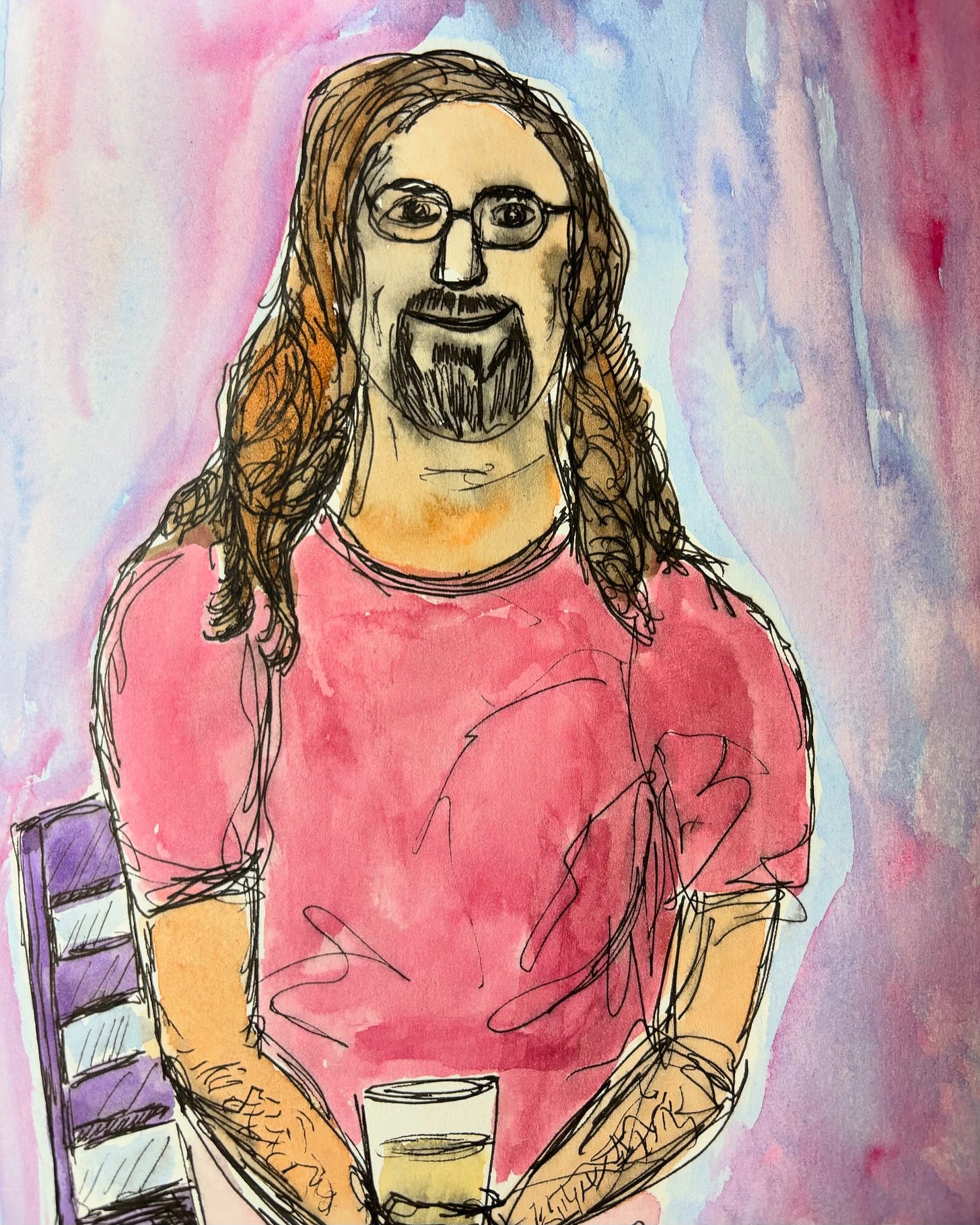PROCRASTINATION
Procrastination and perfectionism have stalled many of my writing projects—but this time, they led me somewhere unexpected.
This time, I channeled those dreaded P-words into something productive—an illustrated memoir exploring my life through the lens of Asperger’s Syndrome.
I also started this Substack newsletter to share my progress on this new project.
So why is this new project different? Won’t those P-word demons trash this one, too?
Unlike my former academic writing, it’s different because I care about the content.
It’s personal.
It blends two of my favorite things: art and talking about myself, or at least talking about my art. What’s the difference, really? My art is an extension of who I am.
Plus, we Aspies like to talk about our interests. It’s difficult to know when to stop. I struggle reading non-verbal communication, so I may not notice your eyes glazing over as I go into more detail than you care to hear about a topic.
So, what exactly is the new project?
It’s an illustrated memoir that builds upon and reshapes an earlier book project, tentatively titled Zen and the Artful Buddhist: Asperger’s, Art, and Academia.
That project quickly became large and, for me, unmanageable. Even in its pared-down form, which looked at case studies of the artist Agnes Martin (1912-2004), art and spirituality, and my Buddhist-themed art — which is just a slice of my work — it became unwieldy. Part of the problem was my proclivity toward gathering more and more details, an issue that faces many Aspies.
MY ILLUSTRATED LIFE
I posted this painting on Instagram a couple of months ago. In the meantime, I’ve created nine more pages but haven’t posted them all on social media.
I still need to add handwritten text on the opposite page. I’m not sure what I’m waiting for. I suppose perfectionism is still at work — once I add text, it will feel so final, and maybe that’s the problem.
I want the freedom to continue changing my thoughts about the painting.
The painting itself differs radically from my usual style of abstract line drawings: it’s watercolor and representational. There will be many more like it in my illustrated memoir.
But what is this painting about, anyway?
It’s me back in grad school, ready for the haircutting ritual before heading to India for three years of language study and research.
The woman I was dating then was a PhD student in cultural anthropology. We met in French class. Her anthropology cohort threw lots of parties, and they adopted me, so to speak, from the Religious Studies Department.
The ritual haircutting party was a rite of passage for all males embarking on the fieldwork portion of their graduate studies. I was so honored to have been adopted by anthropology grad students.
It was the best night, surrounded by so many friends.
It also reminded me how I can feel alone in a crowd. Hence, I intentionally didn’t draw the crowd behind me, but maybe I will before I publish the book.
ASPERGER’S SYNDROME
Asperger’s Syndrome contributes to feeling socially awkward, unsure of myself, and not adept at reading social cues, among other things. Even when surrounded by friends, I often feel alone or at least not integrated into the group.
For example, I frequently feel unable to join conversations. My lack of confidence in social situations keeps me from joining others’ conversations. Of course, I don’t want to butt into a conversation. Yet, I also feel like I’m hovering above the scene, watching it while not being a part of it.
It’s no one’s fault.
I was 58 when I found out about my Asperger’s profile a few years ago. That late diagnosis turned my world upside down, yet it also gave me a new lease on life. I will say much more about that in future posts here.
Until then, I just thought I was shy or had low self-esteem and a lack of confidence.
Once I learned about Asperger’s Syndrome, the diagnosis offered a fresh perspective on my research materials. Now, it felt as if I could personalize the research. Yet, since retiring early in the Spring of 2022, I have continued clinging tightly to academic notions of writing, which is surprising given that I loathed such writing. Even with a fresh perspective, I tried to fit my story into the academic writing model.
My interpretation of my paintings and memories continues to evolve. Meanwhile, I’m experimenting with new art styles, pushing myself out of my comfort zone.
This illustrated memoir challenges me in new ways, both artistically and personally. Forget perfectionism—I’m embracing the journey.




Great stuff my friend!
Way to go, Jeff! U dah man! Looking forward to more. Jim, your bro-in-law.